Composition and form of release
Active ingredient: bilastine.
Composition
- 1 tablet contains bilastine 20 mg;
- Excipients: microcrystalline cellulose, sodium starch glycolate (type A), colloidal anhydrous silicon dioxide, magnesium stearate.
Release form
Tablets.
Pharmacological properties
Pharmacodynamics. Bilastine is a long-acting antihistamine that does not cause a sedative effect, selectively binds to peripheral h1-receptors and does not bind to m-cholinergic receptors.
After a single application, bilastine inhibits the development of histamine-induced skin reactions with blisters and erythema for 24 hours.
In clinical studies in patients with allergic rhinoconjunctivitis (seasonal and perennial), bilastine 20 mg once daily for 14-28 days was associated with relief of symptoms such as sneezing, nasal discharge, nasal itching, nasal congestion, itchy eyes, tearing and redness of the eyes. The therapeutic effect of bilastine was maintained for 24 hours.
In clinical studies in patients with chronic idiopathic urticaria, bilastine 20 mg once daily for 28 days was associated with a reduction in the severity of itching and a reduction in the number and size of wheals; patients also experienced less discomfort from the hives. Patients also reported improved sleep and well-being.
Neither clinically significant prolongation of the QT interval on the ECG nor other cardiovascular disorders were observed during the clinical studies of bilastine.
Pharmacokinetics. Absorption. After oral administration, bilastine is rapidly absorbed, and its C max in blood plasma is reached 1.3 hours after administration. No accumulation of the drug in the body has been detected. The average bioavailability when administered orally is 61%.
Distribution. In vitro and in vivo studies have shown that bilastine is a substrate for P-glycoprotein and the transporter OATP. Bilastine is apparently not a substrate for BCRP or for OCTP, OAT1 and OAT3. In vitro data do not suggest that bilastine inhibits the activity of transporters such as P-gp, MRP2, BCRP, BSEP, OATP1B1, OATP1B3, OATP2B1, OAT1, OAT3, OCT1, OCT2 and NTCP in the systemic circulation, as its ability to inhibit P-gp, OATP2B1 and OCT1 is negligible and is characterized by an IC50 value of ≥300 μM, which significantly exceeds the estimated Cmax in plasma in the case of its clinical use. Therefore, such interactions are not clinically relevant. However, similar studies indicate that inhibition of intestinal mucosal transport proteins (e.g. P-gp) by bilastine cannot be ruled out. After administration in therapeutic doses, bilastine is 84-90% bound to plasma proteins.
Biotransformation: In in vitro studies, bilastine did not show the ability to induce or inhibit the activity of cytochrome P450 isoenzymes.
Conclusion. According to a study conducted with the participation of volunteers, after a single administration of 14 C-bilastine at a dose of 20 mg, almost 95% of the administered dose was detected in the urine and feces (28.3 and 66.5%, respectively) as unchanged bilastine, which allows us to conclude that bilastine is metabolized insignificantly in the human body. The average T ½ of bilastine in healthy volunteers is 14.5 hours.
Linearity: In the dose range from 5 to 220 mg, the pharmacokinetic parameters of bilastine change in direct proportion to the dose; at the same time, they differ slightly in different healthy volunteers.
Indication
Symptomatic treatment of allergic rhinoconjunctivitis (seasonal and perennial) and urticaria.
Application
Adults and children (12 years of age and older): The recommended dose is 20 mg (1 tablet) once daily for the relief of symptoms of allergic rhinoconjunctivitis (seasonal and perennial) and urticaria.
The tablet should be taken orally 1 hour before or 2 hours after a meal or fruit juice.
Elderly patients. No dose adjustment is required for elderly patients. Experience in patients over 65 years of age is limited.
Renal impairment: No dose adjustment is required for patients with renal impairment.
Hepatic impairment. There is no clinical experience with the drug in patients with hepatic impairment. Since bilastine is not metabolized and is excreted mainly by the kidneys, hepatic impairment should not lead to an increase in its systemic exposure to a dangerous level. Therefore, dose adjustment is not required in patients with hepatic impairment.
Duration of treatment. Patients with allergic rhinitis should use the drug only during the period of contact with allergens. In individuals with seasonal allergic rhinitis, treatment can be stopped after symptoms subside and resumed after their return. In patients with perennial allergic rhinitis, the drug can be used continuously during the period of contact with allergens. In patients with urticaria, the duration of therapy depends on the nature and duration of symptoms, as well as their dynamics.
Contraindication
Hypersensitivity to the active substance (bilastine) or to any of the excipients.
Side effects
In clinical studies in patients with allergic rhinoconjunctivitis or chronic idiopathic urticaria, adverse events with bilastine 20 mg occurred at approximately the same frequency as with placebo (12.7% and 12.8%). The results of the studies indicate that the most frequently observed adverse reactions with bilastine 20 mg were headache, drowsiness, dizziness and fatigue. These adverse events were observed at approximately the same frequency in patients taking placebo.
The following adverse reactions are listed, which are considered or at least possibly related to bilastine and which were observed in more than 0.1% of patients receiving bilastine 20 mg in the clinical development program.
By frequency, side effects are divided into the following categories: very often (≥1/10); often (≥1/100 and 1/10); sometimes (≥1/1000 and 1/100); rarely (≥1/10,000 and 1/1000); very rarely (1/10,000), unknown (available data do not allow an estimate).
Infections and parasitic diseases: sometimes – oral herpes.
Nutritional and metabolic disorders: sometimes – increased appetite.
From the psyche: sometimes – anxiety, insomnia.
From the organs of hearing and balance: sometimes – tinnitus, dizziness.
From the cardiovascular system: sometimes – blockade of the right bundle branch block, sinus arrhythmia, prolongation of the QT interval on the ECG, other ECG abnormalities.
From the nervous system: often – drowsiness, headache; sometimes – dizziness.
On the part of the respiratory system: sometimes – shortness of breath, unpleasant sensations in the nose, dryness in the nose.
On the part of the digestive system: sometimes – pain in the upper abdomen, abdominal pain, nausea, abdominal discomfort, diarrhea, dry mouth, dyspepsia, gastritis.
Skin and subcutaneous tissue disorders: sometimes – itching.
General and local disorders: sometimes – fatigue, thirst, exacerbation of existing diseases, fever, asthenia.
Additional research methods: increased activity of gamma-glutamyl transpeptidase, ALT, AST, increased blood creatinine level, increased blood TG level, increased body weight.
Special instructions
In patients with moderate or severe renal impairment, the use of bilastine simultaneously with p-glycoprotein inhibitors (ketoconazole, erythromycin, cyclosporine, ritonavir, diltiazem, etc.) may lead to an increase in the concentration of bilastine in the blood plasma and, consequently, to an increase in the risk of its side effects. Therefore, bilastine should not be used simultaneously with p-glycoprotein inhibitors in patients with moderate or severe renal impairment.
Use during pregnancy and lactation. Fertility. Clinical data are limited. Animal studies have not shown any adverse effects on fertility.
Pregnancy: There are no data on the use of bilastine in pregnant women.
Animal studies also do not indicate any direct or indirect harmful effects on reproduction, parturition or postnatal development. Based on safety considerations, Nixar should not be used during pregnancy.
Breastfeeding. There are no data on whether bilastine is excreted in human milk. The excretion of bilastine in milk has not been studied in animals. A decision on whether to continue or discontinue breast-feeding or to continue or discontinue therapy with Nixar should be made taking into account the benefit of breast-feeding for the child and the need for bilastine therapy for the mother.
Children: The safety and effectiveness of bilastine in children under 12 years of age have not been established.
Ability to influence the reaction rate when driving vehicles or working with other mechanisms. According to a study of the effect of bilastine on the ability to drive vehicles, the use of bilastine at a dose of 20 mg does not affect the ability to drive vehicles. However, patients should be informed that in individual cases the drug may cause drowsiness and, thus, affect the ability to drive vehicles and work with mechanisms.
Interactions
Interaction with food. Food reduces the bioavailability of bilastine taken orally by 30%.
Interaction with grapefruit juice. When bilastine 20 mg was administered concomitantly with grapefruit juice, the bioavailability of bilastine was reduced by 30%. A similar effect may be observed with other fruit juices. The extent of the reduction in bioavailability may vary depending on the manufacturer of the juice and the fruit from which it is derived. This interaction is due to the ability of fruit components to inhibit the activity of the organic anion transporter protein OATP1A2, for which bilastine is a substrate. Drugs that are substrates or inhibitors of OATP1A2 (e.g. ritonavir or rifampicin) may also reduce the plasma concentration of bilastine.
Interaction with ketoconazole or erythromycin. When bilastine was administered simultaneously with ketoconazole or erythromycin, the AUC of bilastine increased by 2 times, and C max by 2-3 times. Such effects can be explained by the interaction at the level of transport proteins responsible for the excretion of drugs from intestinal cells, since bilastine is a substrate of P-glycoprotein and is not metabolized. The safety profile of bilastine, on the one hand, and ketoconazole or erythromycin, on the other, is probably not affected by these effects. Other drugs that are substrates or inhibitors of P-glycoprotein (e.g. cyclosporine) can also increase the concentration of bilastine in the blood plasma.
Interaction with diltiazem. When bilastine 20 mg was administered simultaneously with diltiazem 60 mg, the Cmax of bilastine increased by 50%. This effect can be explained by an interaction at the level of transport proteins responsible for the excretion of drugs from intestinal cells; this effect is unlikely to affect the safety profile of bilastine.
Interaction with ethyl alcohol. After simultaneous administration of alcohol and bilastine at a dose of 20 mg, psychomotor functions were at the same level as after simultaneous administration of alcohol and placebo. Bilastine does not affect psychomotor functions when taken with ethyl alcohol.
Interaction with lorazepam. When bilastine was used at a dose of 20 mg simultaneously with lorazepam at a dose of 3 mg for 8 days, no increase in the CNS depressant effect of lorazepam was detected.
Overdose
Data on acute overdose were obtained only during clinical studies. Against the background of the use of bilastine in doses exceeding the therapeutic by 10-11 times, side effects in healthy volunteers occurred 2 times more often than against the background of the use of placebo. Side effects that were observed more often included dizziness, headache and nausea. No serious adverse reactions and a significant increase in the duration of the QTc interval were noted. In a crossover study with measurement of the QT/QTc intervals, which studied the effect of repeated use of bilastine on ventricular repolarization, no statistically significant prolongation of the QTc interval was detected.
Treatment: In case of overdose, symptomatic and supportive therapy is recommended. There is no specific antidote for bilastine.
Storage conditions
Does not require special storage conditions.

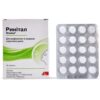
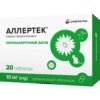

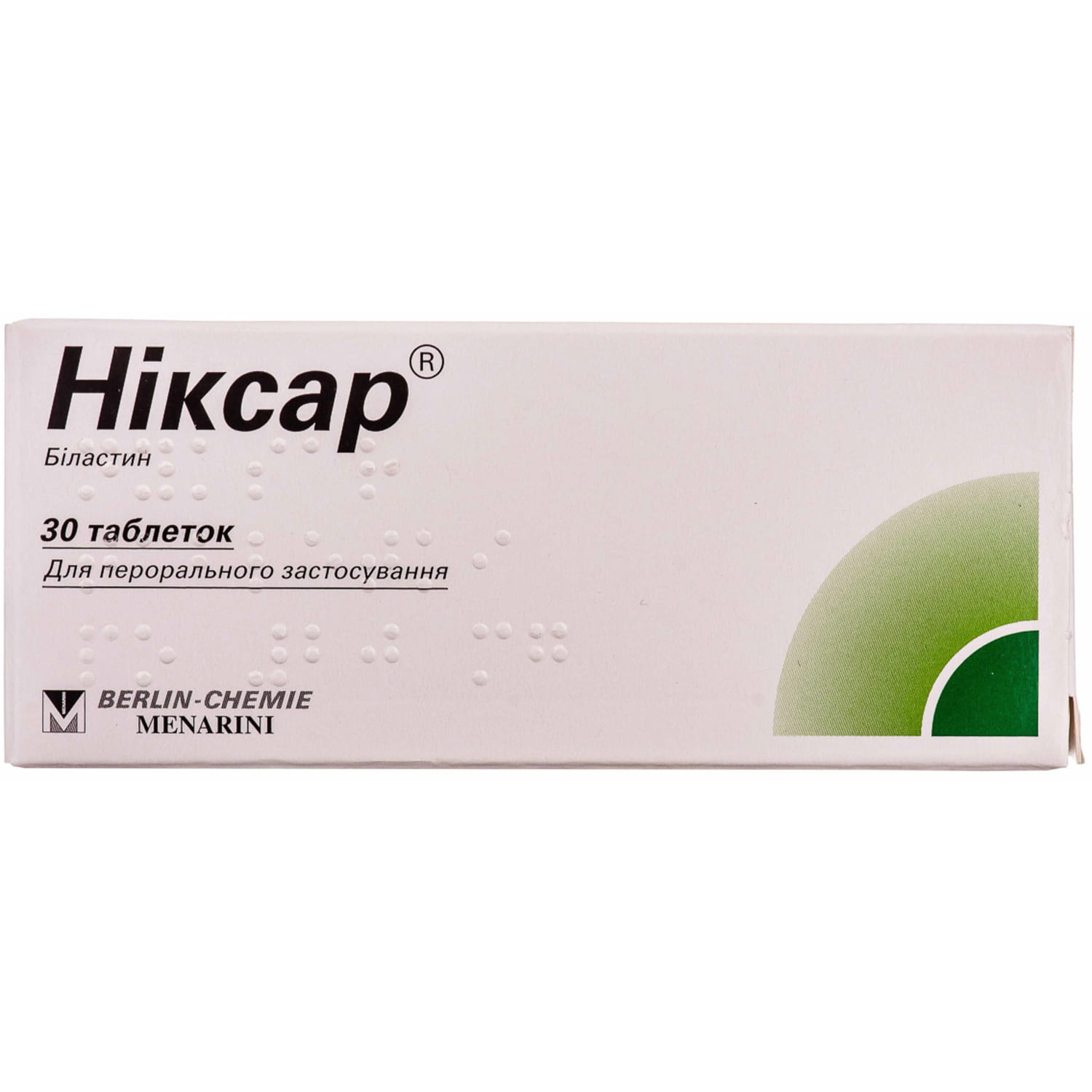
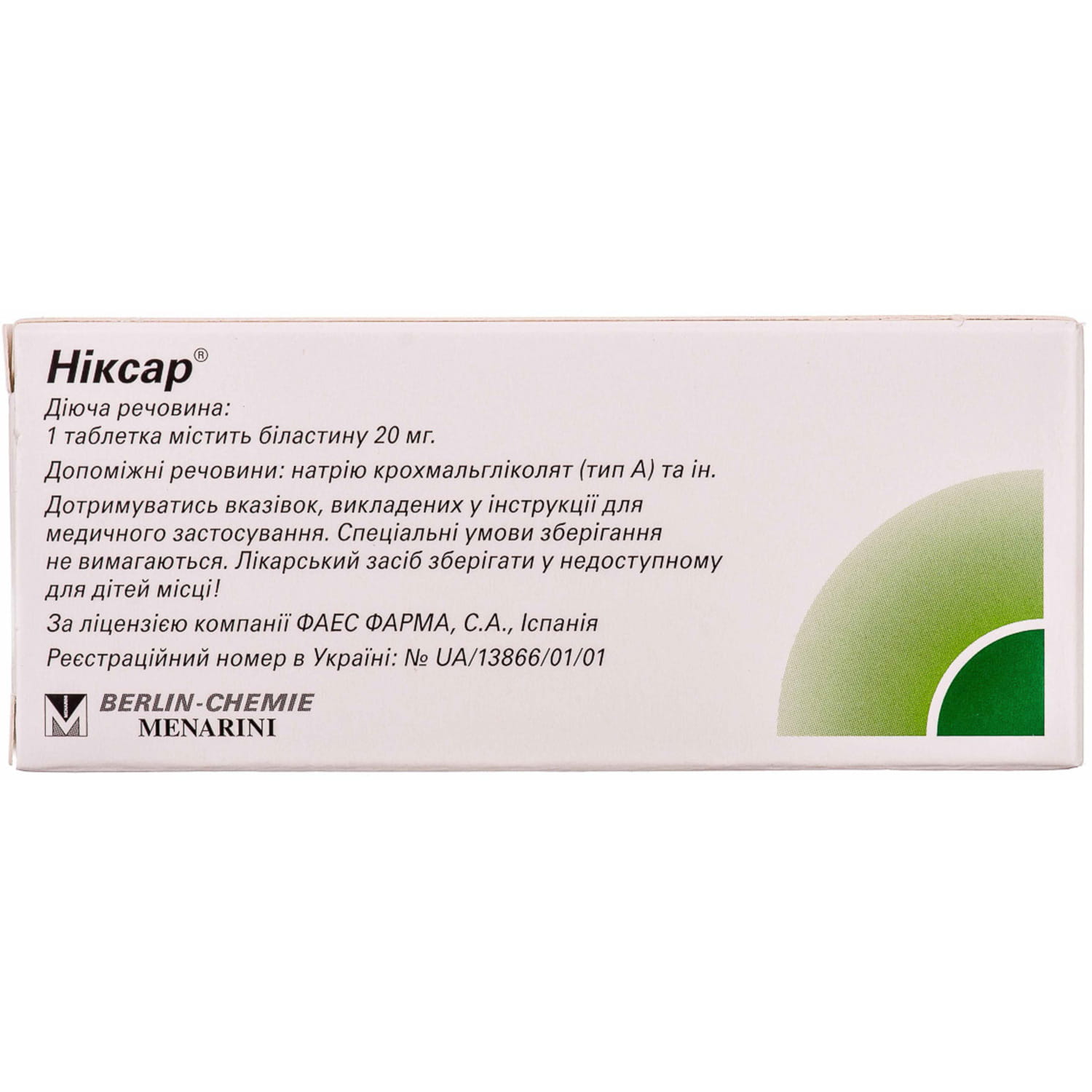

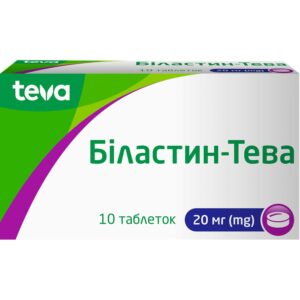
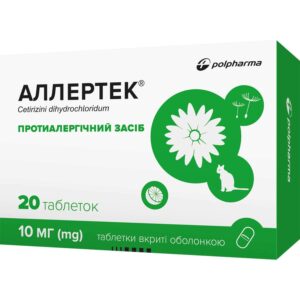
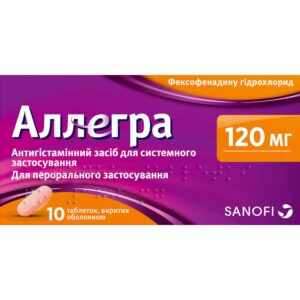
Reviews
There are no reviews yet.